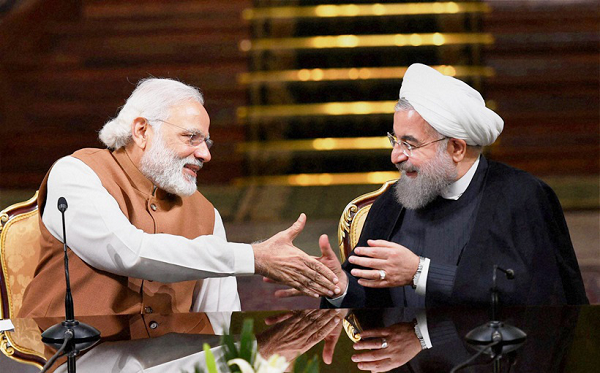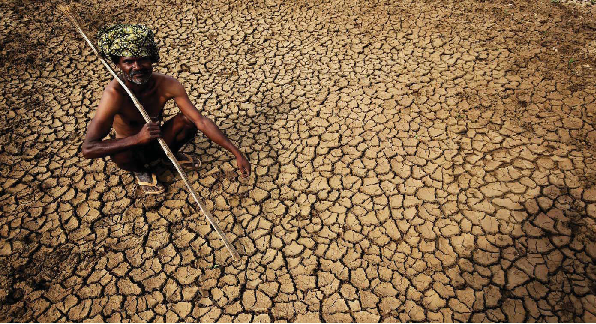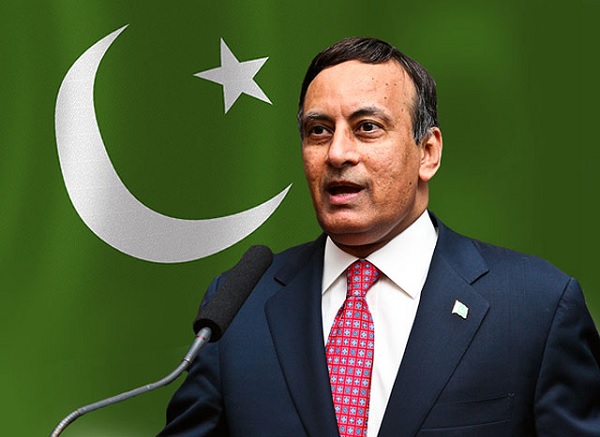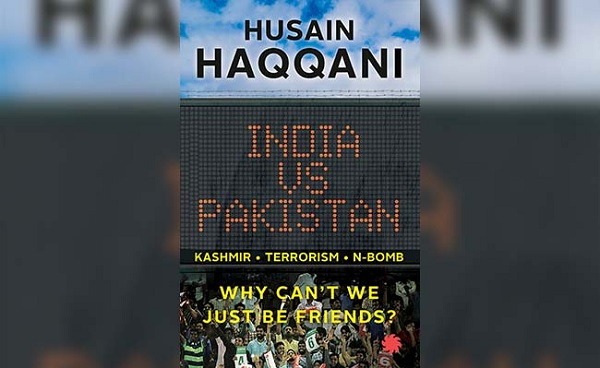
by Editor | May 25, 2021 | Economy, News
 By Meghna Mital, New Delhi, (IANS) The World Bank has dropped the use of developing nation tag for India in its specialised reports and instead classifies it as a “lower-middle-income” economy in South Asia, a top official has said.
By Meghna Mital, New Delhi, (IANS) The World Bank has dropped the use of developing nation tag for India in its specialised reports and instead classifies it as a “lower-middle-income” economy in South Asia, a top official has said.
“In our World Development Indicators publication, we’ve stopped grouping low- and middle-income countries together as ‘developing countries’. For analytical purposes, India continues to be classified as lower-middle-income economy,” World Bank Data Scientist Tariq Khokhar told IANS.
“We are not changing term ‘developing countries’ or ‘developing world’ in our general work but when it comes to presenting specialized data, we will use more precise groupings of countries,” Khokhar said in an e-mail interview, adding, the term developing country was no more useful for analytical purposes.
Accordingly, while India will be referred to as a lower-middle-income economy in all of World Bank’s analytical reports, it may be referred to as a developing country only in some of the generic communications.
The decision to stop using the term developing countries, the World Bank specialist said, has been taken in view of the word having no universal definition, causing countries like Malaysia and Malawi to be come under the same category earlier.
“There is no internationally agreed definition of the term ‘developing world’. There’s often a big gap between the countries within the developing world grouping — which make, for instance, Malaysia and Malawi both developing countries,” Khokhar said.
Malaysia has a gross domestic product of $338.1 billion, according to the 2014 figures, while Malawi’s stands at a merely $4.258 billion. Now while Malaysia is referred to as upper middle-income economy, Malawi falls in a low-income classification.
As per the classification, Afghanistan, Bangladesh and Nepal are low-income economies, Pakistan and Sri Lanka fall under lower-middle-income, Brazil, South Africa and China under upper middle income, Russia and Singapore under high-income-Non-OECD and the US under high income-OECD.
Meghna Mital can be reached at meghna.m@ians.in)

by Editor | May 25, 2021 | Business
 Chennai, (IANS) Global credit rating agency Moody’s Investors Service on Thursday said India’s bankruptcy code boosts creditors bargaining power against big borrowers.
Chennai, (IANS) Global credit rating agency Moody’s Investors Service on Thursday said India’s bankruptcy code boosts creditors bargaining power against big borrowers.
However, Moody’s also said significant infrastructure constraints have to be crossed for the framework to be fully operational.
On May 11, Indian parliament passed the a national bankruptcy law, the Insolvency and Bankruptcy Code, 2016, which is now pending the President’s signature.
“The current weak legal framework for asset resolution has been a key structural credit weakness for Indian banks,” Srikanth Vadlamani, vice president and senior credit officer at Moody’s.
“The proposed new rules address several key inefficiencies in the current resolution regime,” he said in his report `Banks-India: Bankruptcy Law is Credit Positive for Indian Banks, but Challenges Remain’.
According to the report, the proposed bankruptcy law would; introduce a unified framework to replace the current collection of separate laws drafted in piecemeal fashion across overlapping jurisdictions; reduce threshold for creditors to invoke the insolvency resolution process (IRP); introduce third-party insolvency professionals (IP) as intermediaries to oversee the IRP, replacing the debtor’s existing management and operate the company as a going concern upon initiation of an IRP; give creditors overriding authority to approve terms of any restructuring package; and limit duration of IRP to maximum of 270 days, after which a company will be automatically liquidated.
These features are positive for Indian banks because they will act as an incentive for corporate borrowers to avoid loan default and improve the recovery of assets, the report said.
In addition to increasing banks’ influence over the restructuring process, the mandated replacement of the existing management during the process should act as a key disincentive for debtors to default in the first place.
Moreover, the limited timeframe strengthens the banks’ bargaining power over delinquent borrowers.
According to Moody’s, significant infrastructure constraints have to be overcome before the framework can become fully operational, including; development of the required infrastructure required support new restructuring procedure, particularly legal resources and information utilities; time required for various stakeholders to accumulate the requisite legal experience and precedents for the new system to be fully up and running; and limited impact that the new law may have on the liquidation process.
The proposed law will have limited benefit in addressing the current asset quality issues facing Indian banks.
“In particular, the banks will still have limited avenues available to dispose of distressed assets, and will in general remain reluctant to make appropriate haircuts to reflect their current weak operating conditions,” Moody’s added.

by Editor | May 25, 2021 | News, Politics

PM Narendra Modi shakes hands with Iranian President Hassan Rouhani during a joint press conference after their meeting at the Saadabad Palace in Tehran, Iran, Monday. (Source: PTI photo)
Tehran, (IANS) Prime Minister Narendra Modi on Monday described India-Iran friendship as “as old as history” after the two sides signed 12 agreements, including three on development of the Chabahar port in this Persian Gulf nation for enhanced connectivity.
“India and Iran are not new friends. Our dosti is as old as history,” Modi said at a joint media conference with Iranian President Hassan Rouhani.
“Through centuries, our societies have stayed connected through art and architecture, ideas and traditions, and culture and commerce,” he said.
The prime minister pointed out that Iran was among the first countries to come forward in support after the 2001 Gujarat earthquake.
“Similarly, India is proud to have stood with the people of Iran during your difficult times,” he said.
Stating that he was impressed by Rouhani’s leadership and the clarity of vision, Modi said that Monday’s talks between the two countries focused on the full range of bilateral engagement.
“We exchanged views on the emerging regional situation and global issues of common concern,” he said.
“The agenda and scope of our partnership is truly substantial. The outcomes and agreements signed today open a new chapter in our strategic partnership.”
Modi also said that the welfare of the people of the two countries was guiding the broad-based economic ties.
“Expanded trade ties, deeper connectivity, including railways, partnerships in oil and gas sector, fertilisers, education and cultural sphere are driving our overall economic engagement,” he stated.
“The bilateral agreement to develop the Chahbahar port and related infrastructure, and availability of about $500 million from India for this purpose, is an important milestone. This major effort would boost economic growth in the region.”
Modi said that he was looking forward to signing of the trilateral transport and transit agreement between India, Iran and Afghanistan later on Monday.
“It will open new routes for India, Iran and Afghanistan to connect among themselves,” he aid.
The prime minister also said that India and Iran shared a crucial stake in peace, stability and prosperity of the region.
“We also have shared concerns at the spread of forces of instability, radicalism and terror in our region,” he said.
“We have agreed to consult closely and regularly on combating threats of terrorism, radicalism, drug trafficking and cyber crime. We have also agreed to enhance interaction between our defence and security institutions on regional and maritime security.”
Modi promised that he and Rouhani would spare no effort to work for the glorious future of the ties between India and Iran.
On his part, Rouhani said that Iran always attached great importance to its relationship with India.
“The economic relationship and cooperation between the two countries will become much bigger,” he said.
“The relationship will go beyond mere trade relationship. When we are talking of economic relationship, we are talking of Iran and the surrounding countries with a population of 400 million and india with a population of one billion.”
Connectivity, energy security and bilateral trade are on top of Modi’s agenda during his two-day visit which comes a little over a month-and-a-half after his trip to Saudi Arabia.
The prime minister, who arrived here on Sunday evening and offered prayers at a gurudwara, will also inaugurate an Indian cultural festival in Iran on Monday.
Modi will also hold talks with the country’s Supreme Leader, Ayatollah Sayyid Ali Hosseini Khamenei.
The prime minister’s visit comes four months after the sanctions on Iran over its nuclear programme were lifted and the international community is re-engaging with the nation.

by Editor | May 25, 2021 | Economy, News
 New Delhi, (IANS) Dubbing drought a “man-made disaster” rather than a natural calamity, experts on Friday said measures taken by central and state governments to deal with it are failing in providing relief.
New Delhi, (IANS) Dubbing drought a “man-made disaster” rather than a natural calamity, experts on Friday said measures taken by central and state governments to deal with it are failing in providing relief.
“There’s no relation between monsoon and drought. The current situation has arise due to poor management of water,” environment journal “Dawn to Earth” managing editor Richard Mahapatra said here at a symposium held by NGO Action Aid.
“Time has come to raise demands for establishing control of the communities over water. This is the only solution for the drought,” he added.
As per Action Aid, over 2,55,000 villages across 255 districts and 10 states are suffering from drought that has affected over 33 crore people.
Urging a revision in the crop system, agricultural policy analyst Devendra Sharma stressed the need of a reasonable price policy and business model.
“Our policies are GDP centric which avoid the conditions such as drought, because they don’t consider such situations. It’s very important to re-evaluate the existing service and situation-based system,” he said.

by Editor | May 25, 2021 | Interviews

Husain Haqqani, Pakistan’s former envoy to the US
New Delhi: (IANS) Prosecution of jihadis in Pakistan is difficult as the system considers them to be “the good guys”, according to Husain Haqqani, Pakistan’s former envoy to the US.
Talking about his latest book, ‘India vs Pakistan: Why Can’t We Just be Friends?’ Haqqani told IANS in an email interview that Pakistan considered jihad to be a low-cost option to bleed India and that this was the only way for it to ensure some form of military parity.
Haqqani, who’s an integral part of the powerful elite in Islamabad and was adviser to four prime ministers, talks in his written replies about jihad, relations with India, Pakistan’s own tryst with the scourge of terrorism, and the nexus between ISI — Pakistan’s military intelligence service — and the Islamic jihadi forces. (Excerpts)

Cover Page: , ‘India vs Pakistan: Why Can’t We Just be Friends?’
Q. Can you explain ex-ISI chief Shuja Pasha’s statement on 26/11 terror attack, “Log hamare the, operation hamara nahi tha” (our people but it was not our operation)?
A. Pasha said, “our people” were involved, he didn’t say it was Pakistan army officers or ISI men. Pasha could have meant Pakistanis or he could be referring to LeT (Lashkar-e-Taiba) as “our people.” However, Pasha had told ex-CIA Director, General Michael Hayden, that “retired Pakistani army officers and retired intelligence officers” were involved in the planning. General Hayden says so in his book. Condoleezza Rice, then Secretary of State, has also written the same.
Since 26/11, Pakistan never went into the depth of the case even though proof was presented. We did arrest some, but we have not successfully prosecuted those responsible and until that is done, questions will remain.
Q. Rice had warned Pakistan to shut down terror operations. However, nothing has changed.
A. Prosecution is difficult in a system where jihadis targeting India are seen as ‘the good guys’. Yes, Secretary Rice had told Islamabad to shut down all terrorist operations. But that wasn’t the first time and certainly not the last. Pakistan has persisted with the same policy since the 1990s. When pushed by US on terror: first deny, then list Pakistani grievances, bring up Kashmir and blame India, provide commitments and assurances and end again with denial. This is not working.
Q. Though US had named Zakiur Rehman Lakhvi of LeT as the 26/11 mastermind, he is roaming around freely in Pakistan. What is stopping Islamabad from taking action?
A. Pakistan sees jihad as a low cost option to bleed India. The security apparatus views terrorism as irregular warfare. Islamabad feels this is the only way to ensure some form of military parity.
Q. Is there a concerted attempt by the Pakistan army to thwart peace talks?
A. As an analyst, I have seen that over the last 69 years, Indian and Pakistani leaders have met 53 times and yet been unable to change the course of their ties. Whenever the two try to move forward, the military has reacted. Civilian and army leaders have lost power after attempting to make peace.
Q. What should be Pakistan’s policy on Kashmir?
A. Having a normal relationship, people-to-people ties and trade doesn’t mean giving up on legal or political claim. The question I ask is: Is Kashmir really Pakistan’s ‘jugular vein’ if it has survived for 69 years without it? Should the two risk nuclear mass destruction over a quarrel they have not been able to resolve for so long?
However, Pakistan’s military has insisted on resolution of the Kashmir imbroglio before opening trade or travel.
Q. Pakistan’s Kashmir policy remains by and large in the hands of the military even when a civilian prime minister holds office. How can we expect a solution?
A. Under civilian prime ministers, Pakistan has moved forward with India. But Pakistan’s security establishment insists on controlling foreign and security policy, including the Kashmir policy. They have not been able to reach any long-lasting solution. Pakistanis realise that it is only civilian leaders who can actually reach a solution.
Q. In your opinion, Indira Gandhi had been magnanimous with the Shimla Pact, but Pakistanis saw the absence of pressure for a full settlement of Kashmir as an opportunity to keep the conflict alive. Should she have been more assertive on Kashmir?
A. Mrs Gandhi did not trust (prime minister) Zulfikar Ali Bhutto but she saw him as preferable to a military regime. For India, domestic unrest or balkanisation of Pakistan, is not a favorable development.
The compromise was to declare in Shimla that “the two countries are resolved to settle their differences by peaceful means through bilateral negotiations.” This was meant to preclude any future war.
Q. The book mentions how Pakistan intelligence had passed on the information of 10 terrorists who sneaked into Gujarat in March. Do you feel that its a sincere move to preempt a crisis after Pathankot?
A. It’s very positive that Pakistan has shared intelligence with India. But it was more because pressure from India and US. India cancelled scheduled talks and (Prime Minister Nawaz) Sharif was eager to resume dialogue. It was less likely that this move reflected concern for possible Indian casualties and was more to do with the need to deflect international pressure.
Q. Are you hopeful of a breakthrough in Indo-Pak relationship after Pathankot?
A. The two foreign secretaries met in New Delhi for the Heart of Asia conference and Prime Minister (Narendra) Modi is scheduled to travel to Islamabad for the SAARC summit in November this year. So, talks will continue as before but for a breakthrough, the two sides need to move beyond simply cancelling or rescheduling talks and create an environment for change.
Q. You also talk about the shrinking space for friendship and increasing ‘saffronisation’ of India. How harmful is this for ties?
A. Indo-Pak ties have become a victim of two parallel and contending nationalisms. In recent years, we are increasingly resembling each other in rage, resentment and public displays of religion.
Q. How do you see US policy towards Pakistan in the wake of US elections?
A. Neither of the current Presidential candidates have expressed a positive view of Pakistan. What should worry my countrymen is that entire US thinktank and the average American share the same view.
Hilary Clinton as Secretary of State in 2011 said, “You can’t keep snakes in your backyard and expect them only to bite your neighbors.” US policy towards Pakistan has been built on what I call ‘Magnificent Delusions’. Pakistan saw the US as its superpower ally who would build its resources to stand up to India, but Washington never saw India as a threat. US and Pakistan have very different goals but still assume they can get the other to work to their advantage.
(Haqqani’s book has been published by Juggernaut. Preetha Nair can be reached at preetha.n@ians.in)

 By Meghna Mital, New Delhi, (IANS) The World Bank has dropped the use of developing nation tag for India in its specialised reports and instead classifies it as a “lower-middle-income” economy in South Asia, a top official has said.
By Meghna Mital, New Delhi, (IANS) The World Bank has dropped the use of developing nation tag for India in its specialised reports and instead classifies it as a “lower-middle-income” economy in South Asia, a top official has said.




